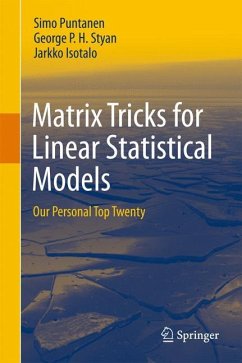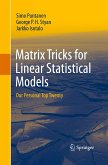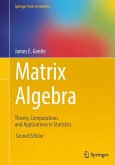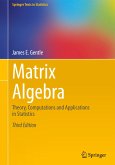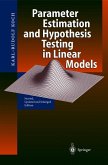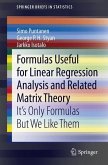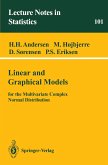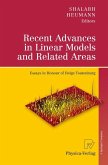In teaching linear statistical models to first-year graduate students or to final-year undergraduate students there is no way to proceed smoothly without matrices and related concepts of linear algebra; their use is really essential. Our experience is that making some particular matrix tricks very familiar to students can substantially increase their insight into linear statistical models (and also multivariate statistical analysis). In matrix algebra, there are handy, sometimes even very simple "tricks" which simplify and clarify the treatment of a problem-both for the student and for the professor. Of course, the concept of a trick is not uniquely defined-by a trick we simply mean here a useful important handy result.
In this book we collect together our Top Twenty favourite matrix tricks for linear statistical models.
In this book we collect together our Top Twenty favourite matrix tricks for linear statistical models.
From the reviews:
"It is for everyone who works on the properties of (multivariate) linear statistical models, especially for graduate students in statistics. Also, the book is ... for experts who have had an introduction to multivariate models and have a big preference for matrix results. ... book is full of recent results and advances of linear algebra related linear statistical models over the last decades. ... book has the potential to become a major reference book for further developments of estimators of linear models in the future." (Wolfgang Polasek, International Statistical Review, Vol. 81 (1), 2013)
"This new book is closely connected with matrices and linear models ... . the authors extract from the matrix algebra and theory of linear models twenty key results or ideas which they call 'tricks'. ... This exceptional book can be recommended to all interested students who wish to improve their skills in linear models and matrix manipulations. It can be recommended also to professors teaching statistics who may utilize this book as a rich source of various exercises, references and interesting historical notes." (Radoslaw Kala, IMAGE, Issue 48, Spring, 2012)
"It is for everyone who works on the properties of (multivariate) linear statistical models, especially for graduate students in statistics. Also, the book is ... for experts who have had an introduction to multivariate models and have a big preference for matrix results. ... book is full of recent results and advances of linear algebra related linear statistical models over the last decades. ... book has the potential to become a major reference book for further developments of estimators of linear models in the future." (Wolfgang Polasek, International Statistical Review, Vol. 81 (1), 2013)
"This new book is closely connected with matrices and linear models ... . the authors extract from the matrix algebra and theory of linear models twenty key results or ideas which they call 'tricks'. ... This exceptional book can be recommended to all interested students who wish to improve their skills in linear models and matrix manipulations. It can be recommended also to professors teaching statistics who may utilize this book as a rich source of various exercises, references and interesting historical notes." (Radoslaw Kala, IMAGE, Issue 48, Spring, 2012)

